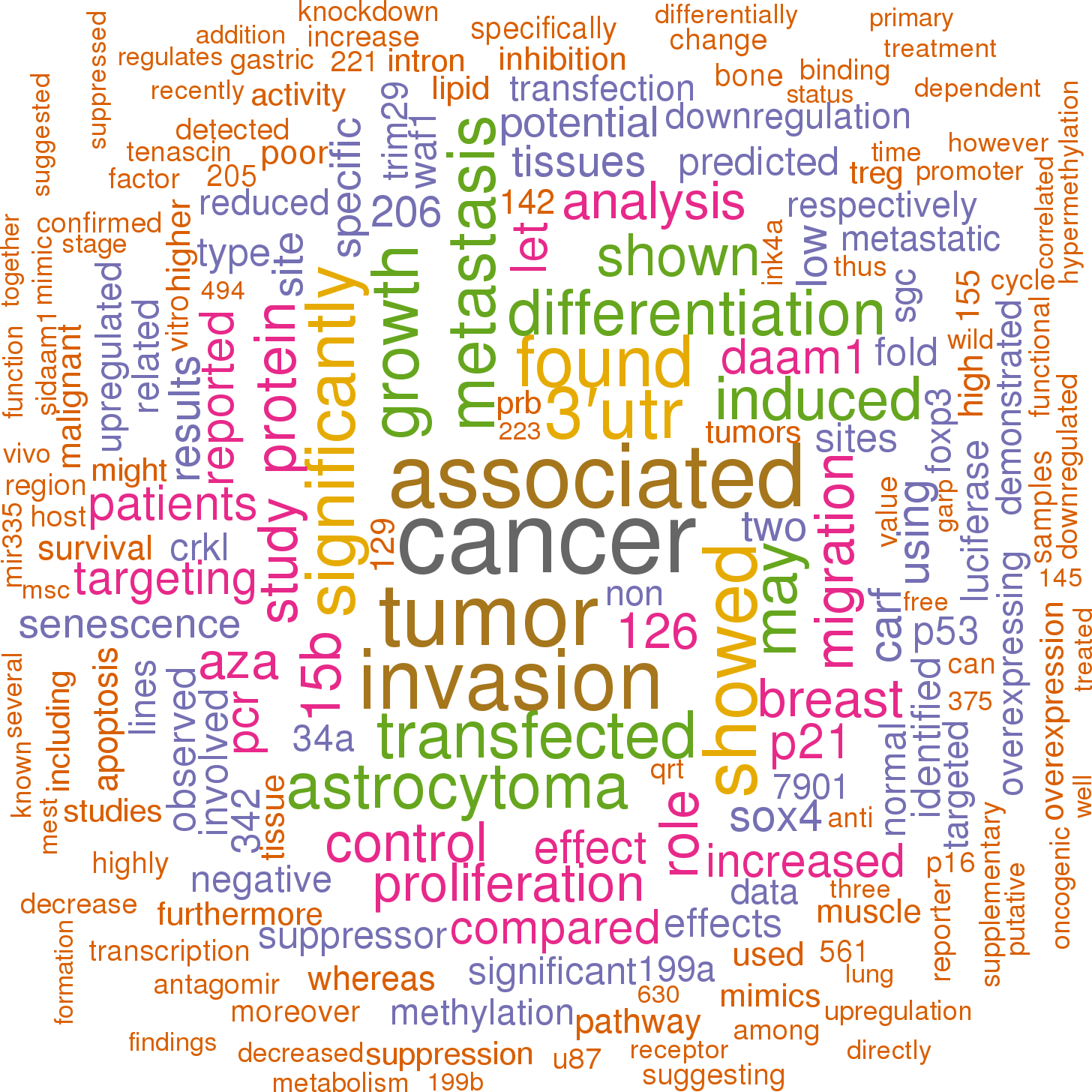Accession
MI0000816
Symbol
HGNC:
MIR335
Description
Homo sapiens
hsa-mir-335 precursor miRNA mir-335
Gene
family?
family?
RF00766;
mir-335
Summary
Caution, this is an AI generated summary based on literature. This may have errors. ?
MIR335 is a microRNA implicated in various cellular processes, and its deregulation has been observed in adipose-derived stem cells (ASCs) [PMC6053905]. This deregulation is associated with a disruption in the timely inactivation of the T gene, which is further linked to compromised lamin A interaction with the T locus, as evidenced by studies conducted on mutant induced pluripotent stem cells (iPS cells) [PMC6053905]. Additionally, MIR335 is among a group of microRNAs, including MIR24-2, MIR142, MIR490, and MIR296, that are present in extracellular vesicles (EVs) [PMC7287171]. These microRNAs are known to target genes that are predominantly involved in critical signaling and structural pathways within the cell such as "Ras protein signal transduction" and "Actin/microtubule cytoskeleton organization" [PMC7287171]. The presence of MIR335 within EVs suggests its potential role in intercellular communication and regulation of these pathways.
Literature search

169 open access papers mention hsa-mir-335
(872 sentences)
(872 sentences)
Sequence
142955
reads,
2321
reads per million, 137 experiments
uguuuugagcgggggUCAAGAGCAAUAACGAAAAAUGUuugucauaaaccgUUUUUCAUUAUUGCUCCUGACCuccucucauuugcuauauuca
.....((((.((((((((.(((((((((.((((((((.((......)).)))))))).))))))))).)))))))).)))).............
.....((((.((((((((.(((((((((.((((((((.((......)).)))))))).))))))))).)))))))).)))).............
Structure
--------uguuu c A C U gu
ugag gggggUCA GAGCAAUAA GAAAAAUG uu c
|||| |||||||| ||||||||| |||||||| ||
acuc ccuCCAGU CUCGUUAUU CUUUUUgc aa a
acuuauaucguuu u C A c au
Annotation confidence
High
Do you think this miRNA is real?
Comments
This sequence is the predicted homologue of a miRNA cloned from rat neuronal tissue [1,2], later verified in human [3].
Genome context
chr7: 130496111-130496204 [+]
Disease association
hsa-mir-335 is associated with one or more human diseases in the Human microRNA Disease Database
| Disease | Description | Category | PubMed ID |
|---|
Mature hsa-miR-335-5p
| Accession | MIMAT0000765 |
| Description | Homo sapiens hsa-miR-335-5p mature miRNA |
| Sequence | 16 - UCAAGAGCAAUAACGAAAAAUGU - 38 |
| Evidence |
experimental
cloned [3-4] |
| Database links |



|
| Predicted targets |



|
Mature hsa-miR-335-3p
| Accession | MIMAT0004703 |
| Description | Homo sapiens hsa-miR-335-3p mature miRNA |
| Sequence | 52 - UUUUUCAUUAUUGCUCCUGACC - 73 |
| Evidence |
experimental
cloned [3] |
| Database links |



|
| Predicted targets |



|
References
|



